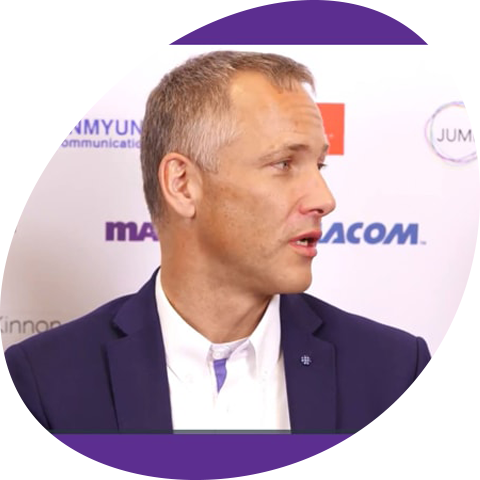Another year, another IBC. As we return from Amsterdam to ponder whether the months of planning, designing and messaging were worth the money, sweat and tears we poured into this event, I am happy to report another successful IBC for Pebble. Throughout the week, I was able to spend quality time with customers, prospects and partners, discussing their thoughts on the state of the industry, their plans for the future and where Pebble can support them.
At the Devoncroft Executive Summit, IP networking and content delivery was highlighted as the number one trend in 2019 and the most important commercial issue for media companies globally, and many customers were keen to discuss the pros and cons of virtualising their playout operations with us.
Whereas a couple of years ago you might have been tempted to believe that virtualisation offered a panacea to every broadcasting challenge, we are finding that many discussions are of a much more pragmatic nature these days, and that’s a good thing. Organisations are coming to the harsh realisation that adding a virtualised infrastructure into their broadcast workflow adds a significant layer of complexity and specific new requirements into the mix. They are realising that choosing to implement a full-scale virtualised platform will require much more than just a change in technology. Instead, it will require a fundamental change in their organisation’s business model as well as their relationship with application providers and integrators. For many broadcasters, virtualisation is not necessarily about being cheaper, or getting more out of the resources. It’s about flexibility, scalability and ease of maintenance, which can certainly result in savings over time, but only when correctly implemented.
It’s no secret that at Pebble, we are firm believers in the advantages of IP technology in the entire media production chain. Having said that, most station managers and broadcast facility CTOs I’ve spoken with recently are wondering how they can get from where they are today, with their current infrastructure, to the brave new world of IP, virtualisation and possibly cloud, in a managed, incremental way.
It’s clear to me that what most of these broadcasters are looking for is an honest and trusted partner. Not a box shifter with the best discount. While there are plenty of vendors out there offering brand-new platforms, ready to go, they require their customers to essentially forget everything they have today. At Pebble we don’t advocate for rip and replace strategies. In fact, we believe that the best strategy is often to focus on evolution rather than revolution and go through the process with a partner you can trust, someone who is flexible, agile, versatile and will work as a consultant with you throughout the process. End users are not simply buying a product, they are investing in the people: building a relationship with their suppliers and collaborating with them to maximise the ROI from this new technology landscape. Vendors should listen to the specific requirements of each deployment, adapt to their customers’ needs, offer expertise and a collaborative approach well beyond the on-air date, and deliver accountability for their offerings throughout the lifecycle of the deployment.
At Pebble, we believe in the power of interoperability and collaboration. As an independent specialist playout automation vendor, it’s in our DNA. We have a long history of interfacing to our end users’ preferred devices to create an agnostic approach that enables them to specify the exact playout infrastructure to meet their specific channel and business requirements. From large multi-national vendors to specialist niche providers, we have built excellent relationships with multiple providers to ensure this is maintained. When we can ensure that these technologies communicate with one other using standardized, universally recognized protocols, the end user gains immense freedom to architect the solution that truly meets their needs.
The fact that we were able to engage in these deep thoughtful and almost philosophical questions with our customers about how to evolve, how to best embrace virtualisation, how to grow their revenue streams is testament to the trust they put in us and the confidence they have in our ability to help them solve their problems. It’s clear to me that following the successful restructuring we went through the last couple of years, we are now recognised as one of the very few remaining independent specialist vendors in playout. In a turbulent market that is plagued by consolidation, we are growing and generating significant profits which allows us to make substantial investments in our R&D. We are small and agile and uniquely placed to help define the future of this vital area of the broadcast industry.
Finally, I’d like to end this note with words of heartfelt gratitude for every one of our Pebbles who worked tirelessly to put together another great IBC show. I’m proud of our team.
Peter





